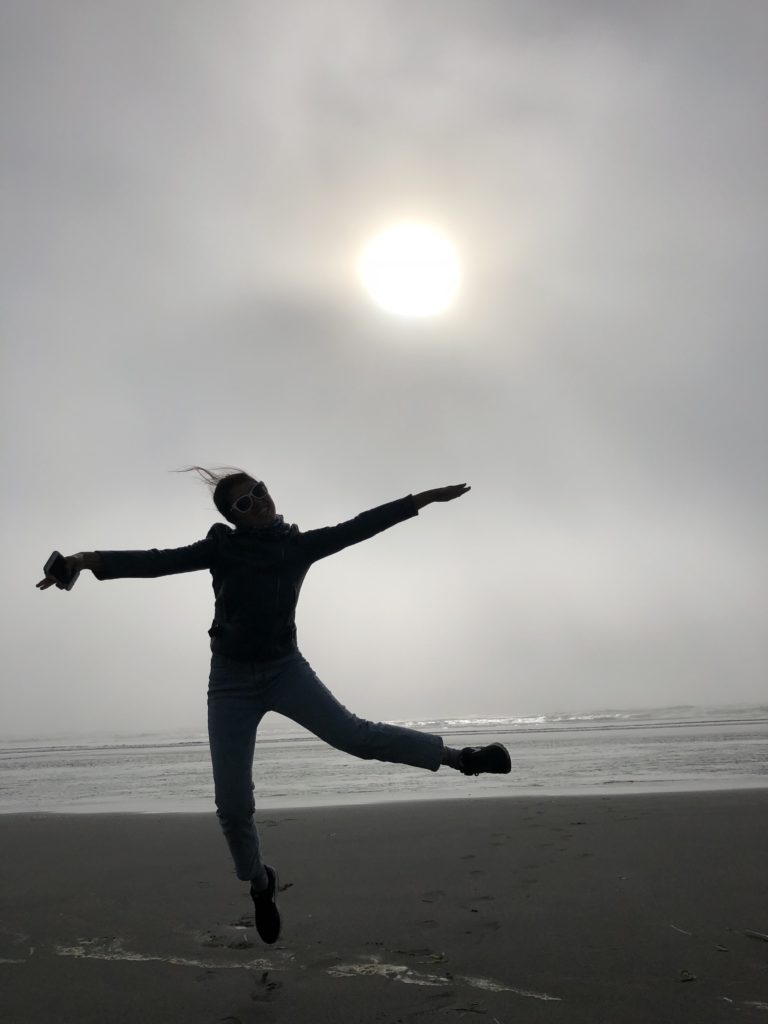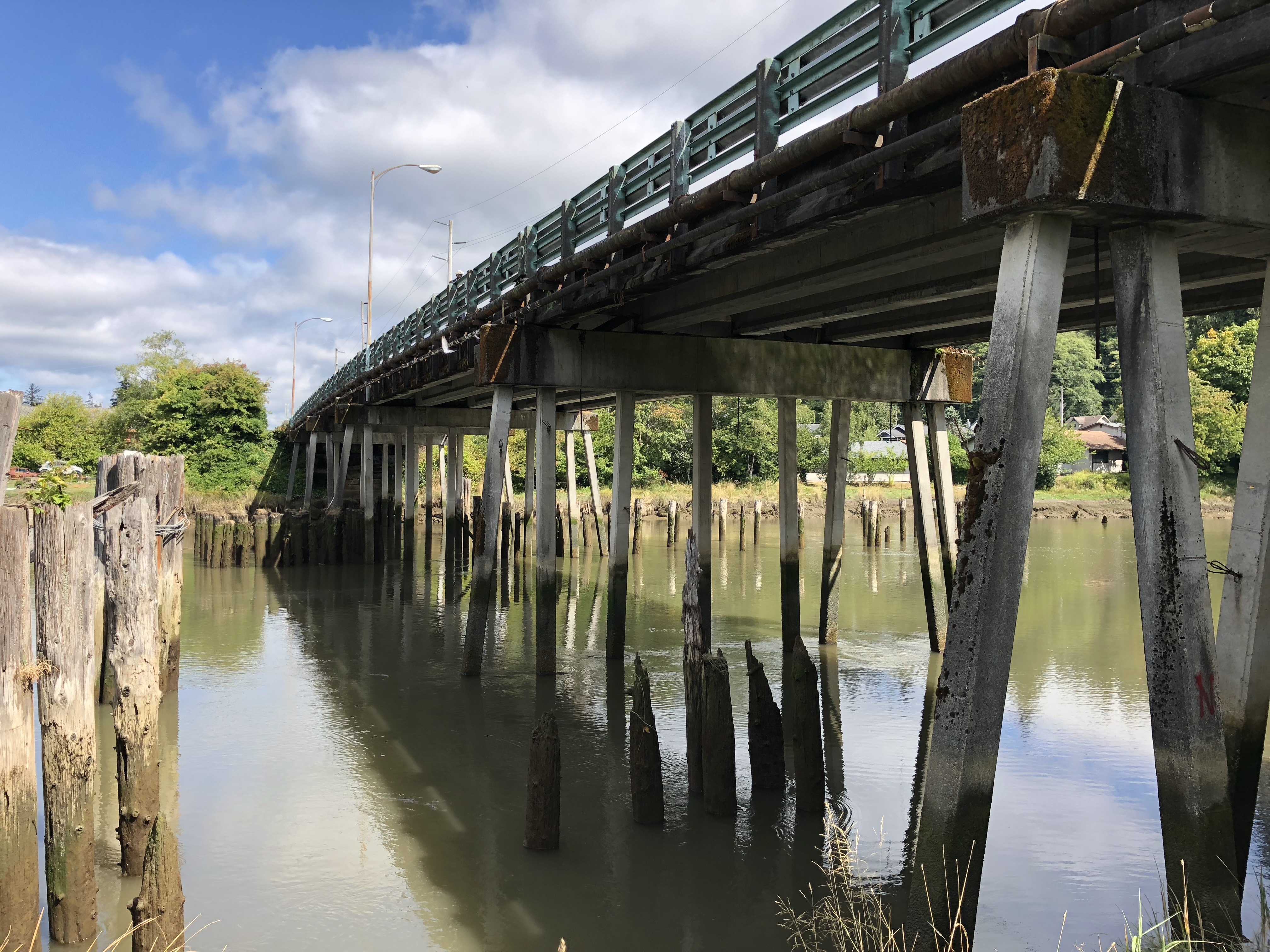The greater Seattle area is all built around water – the broad Puget Sound, large bays, inlets, canals, rivers, and lakes. If you look at Washington state on a map, it looks like the hand of Neptune has ripped out chunks of land in the top left quadrant. Perhaps the Olympic Mountain range blocked his assault.
We spent some time in the city of Tacoma. Like Seattle (50km further north), Tacoma sits on the Puget Sound and feels like its surrounded by water and thick forests.
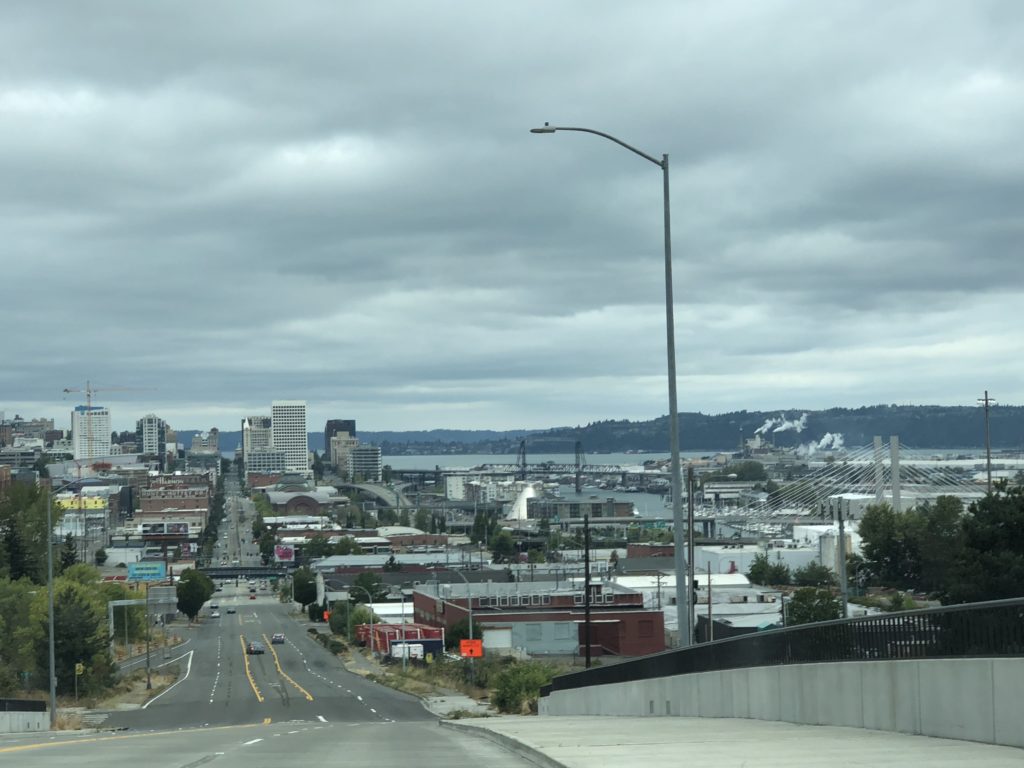
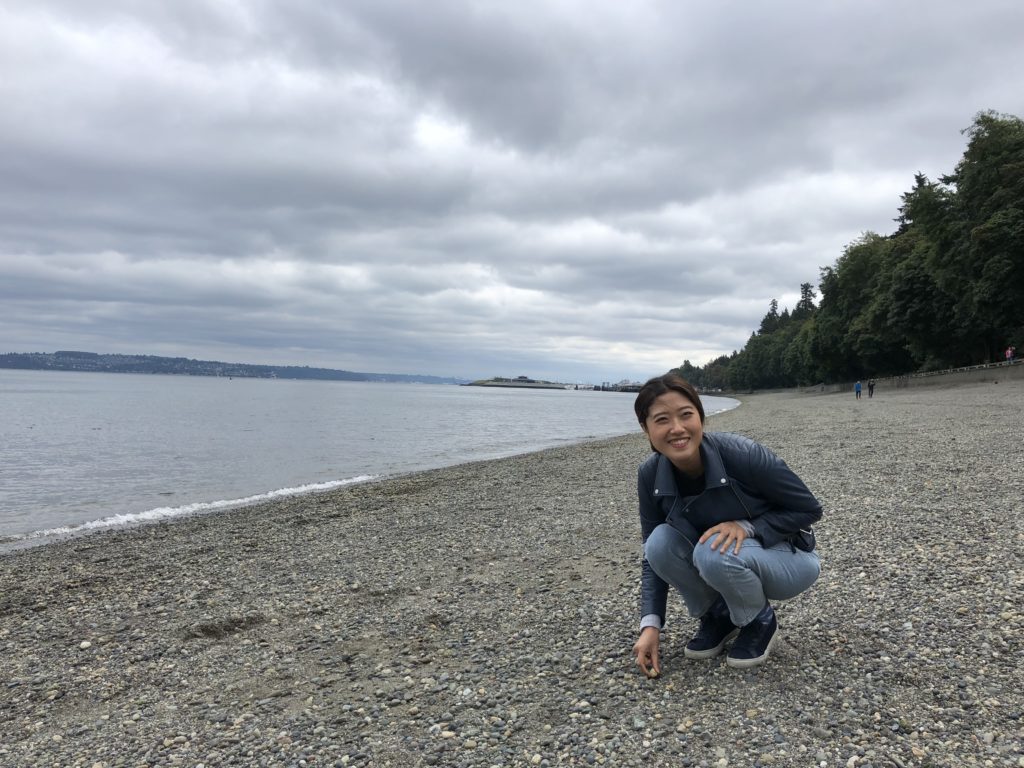
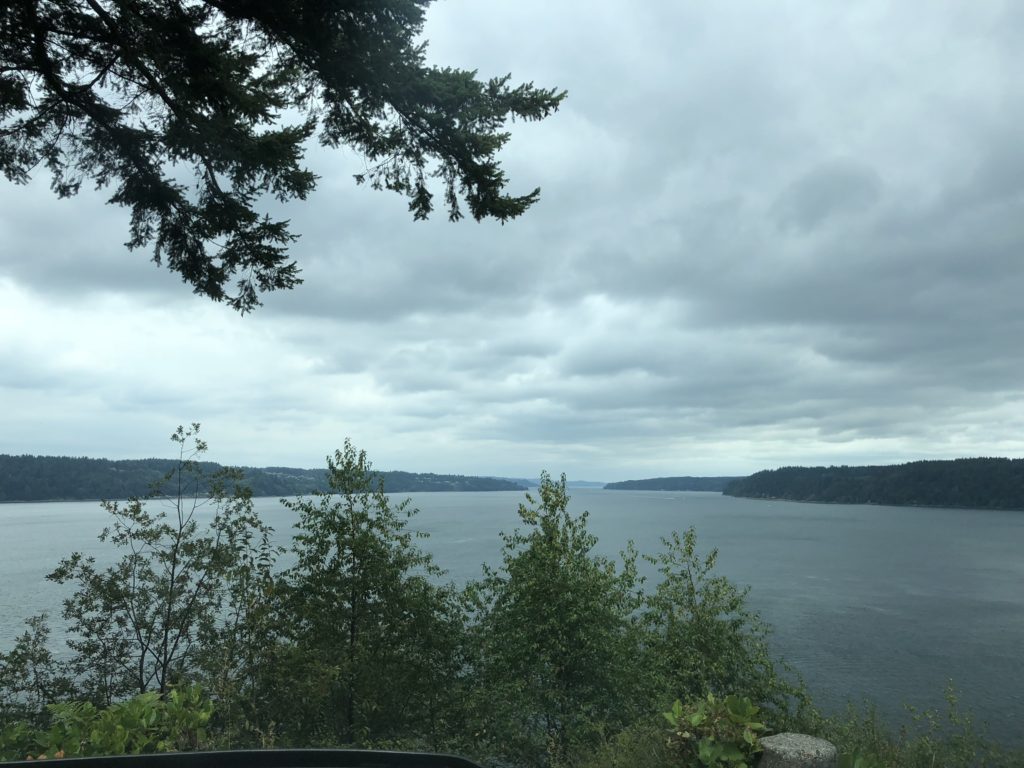
The west coast is also home to the ‘Jack in the Box’ fast food chain and its curly fries. Apparently locals affectionately refer to the restaurant chain as ‘Crap in the Box’. But, on our quickly-expanding fast food rankings list, it managed to beat out McDonalds.
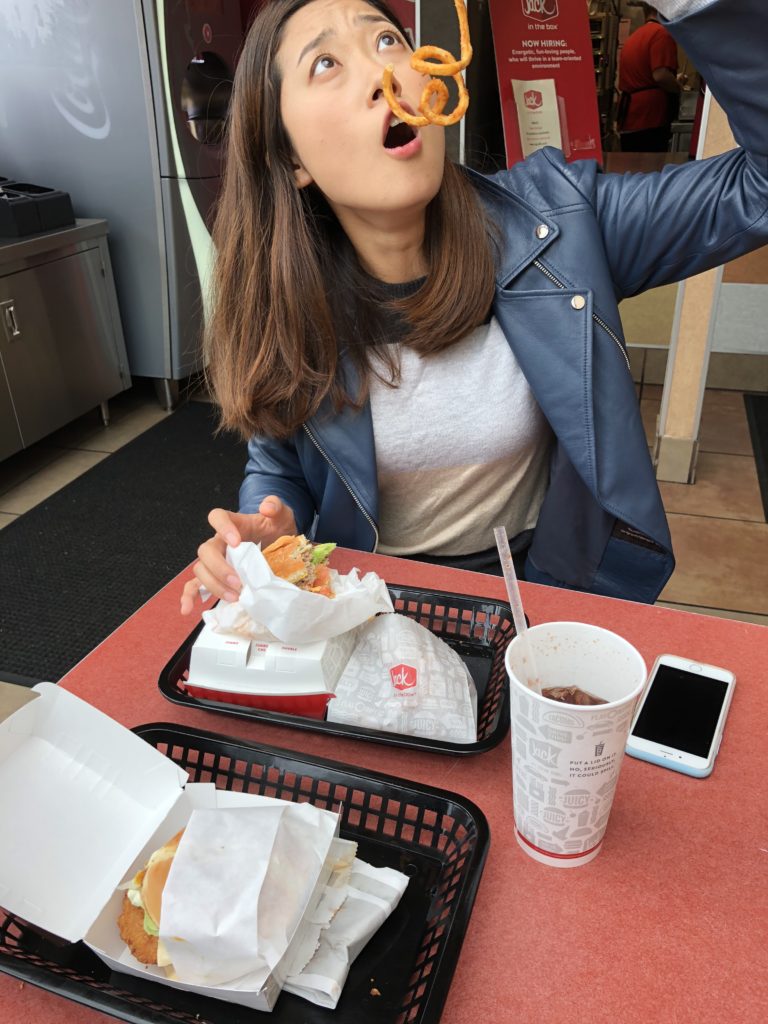
From here, we headed southwest. With the greater Seattle area behind us, the state grew increasingly rural. Dense, dark green forests and small towns built around the lumber industry.
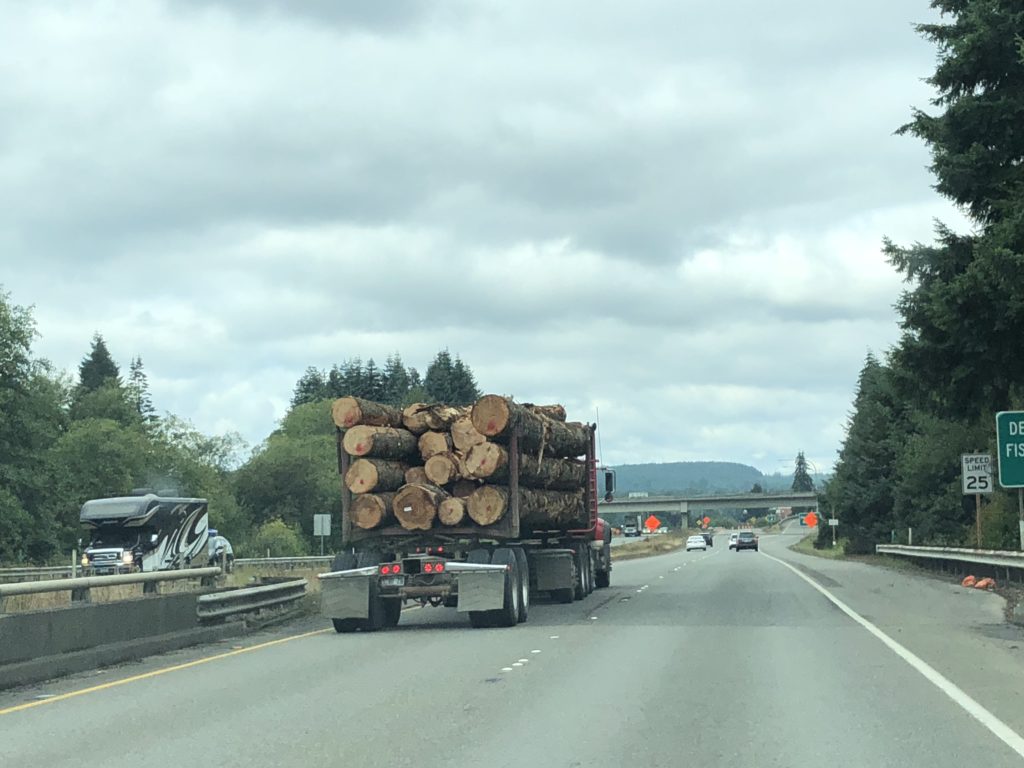
From this poor, rural part of the country sprung one of the most influential music groups of all time. In the little town of Aberdeen (pop: 30,000), Kurt Cobain and Krist Novoselic formed Nirvana and very briefly took over the western world.


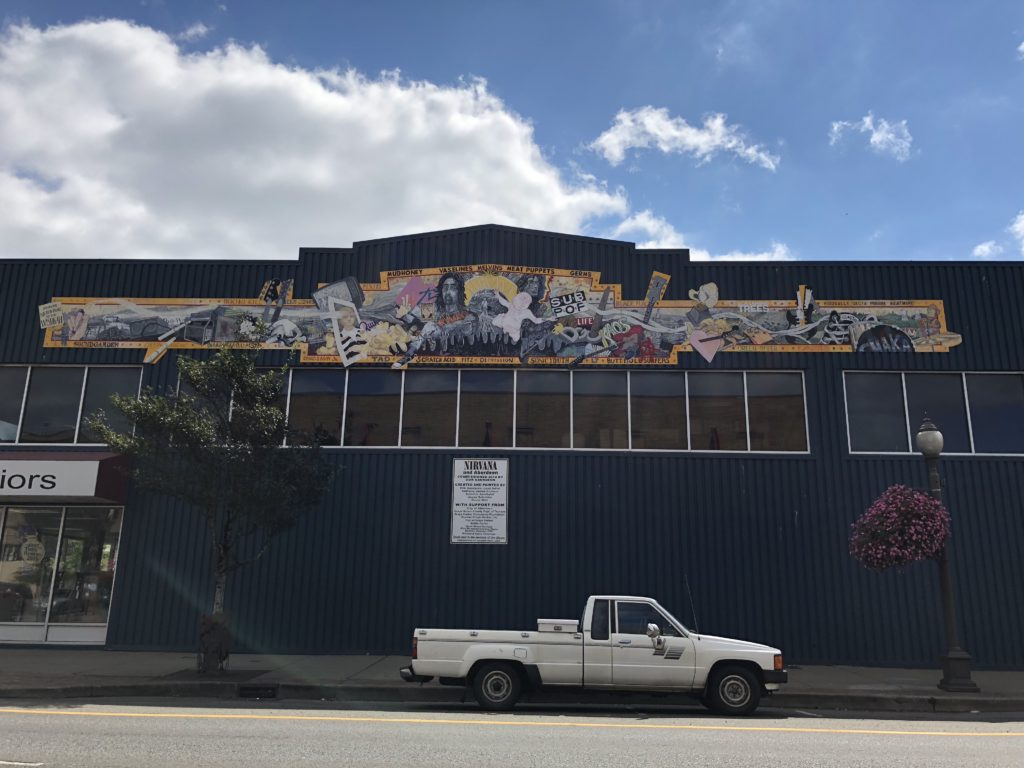
Given that we’d be passing through the area, we decided to do a small tribute tour to Nirvana. With the legendary album ‘Nevermind’ playing in the background, we drove past Kurt Cobain’s childhood home on First Street, the school he attended (and dropped out of), a friend’s house at which he’d often be found jamming, and the Young Street Bridge over the Wishkah river where they’d all hang out. The lyrics for ‘Something in the Way’ refer to this bridge.
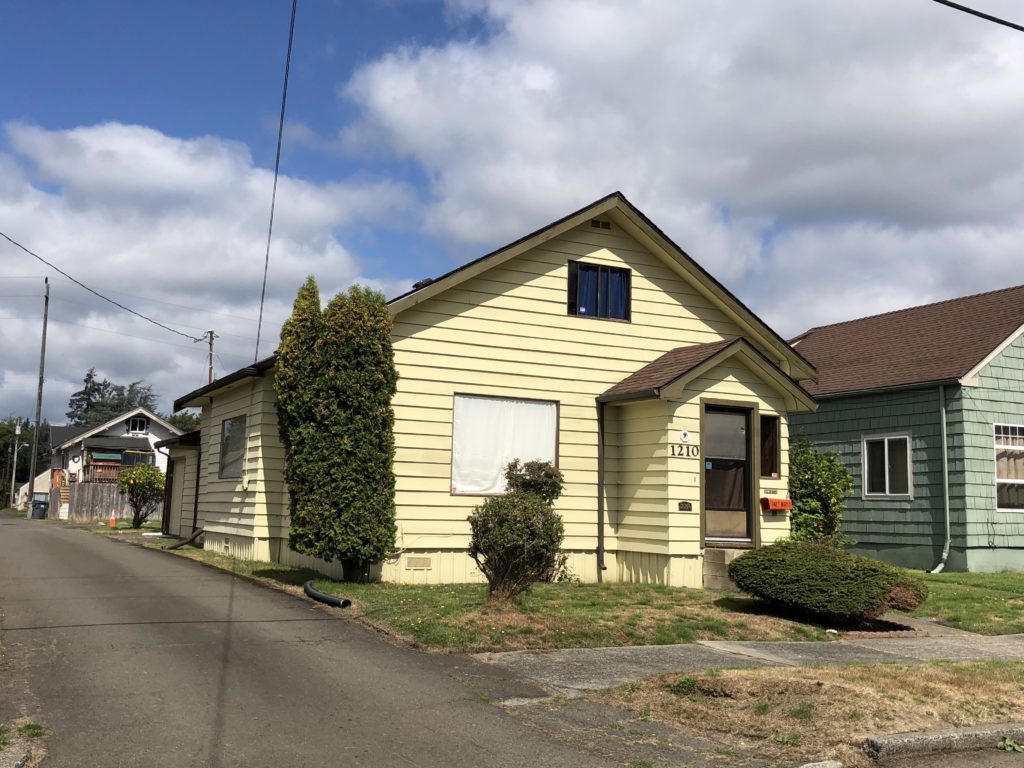
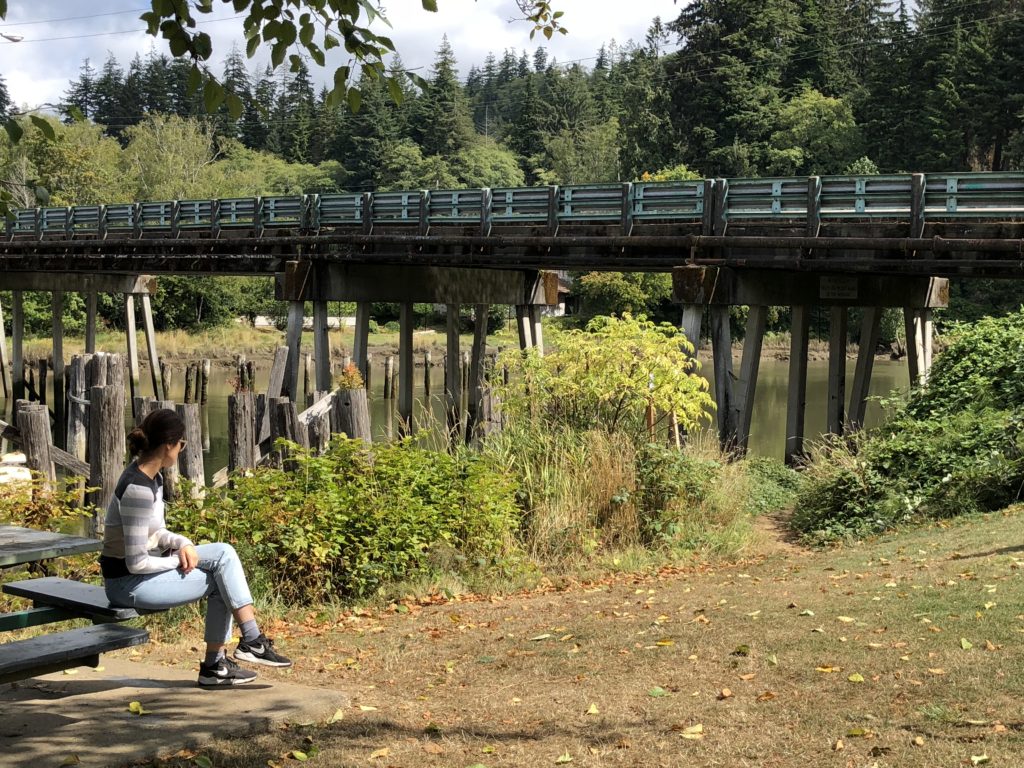

The guy lived hard. After dropping out of school, he was briefly homeless, sometimes sleeping in a cardboard box on a friend’s porch. He worked as a janitor at his old school for a bit (imagine!). He was arrested for stupid things like spray-painting graffiti and trespassing while blind drunk. Around this time he met Krist Novoselic and the pair formed a band. Working as a maintenance man to pay the rent, Cobain and co. wrote music and started to play shows in the area.
The Nirvana exhibit at Seattle’s Museum of Pop Culture captures the whole rapid rise to fame in awesome detail – early pictures, lyrics, letters, reviews, guitars (mostly smashed ones – guitar lifespans took a sudden drop in this phase of music history), videos, etc. – and threads the story together superbly. It’s excellent, and I won’t repeat it here. But I have a few takeaways:
The first is that these guys had nothing. One of their early positive reviews seemed spot on: “Basically, this is the real thing. No rock star contrivance, no intellectual perspective, no master plan for world domination. You’re talking about four in their early twenties guys from rural Washington who wanna rock, who, if they weren’t doing this would be working in a supermarket or lumberyard, or fixing cars.” The point about having no intellectual perspective is interesting – apparently Cobain was really poor at getting his lyrics down before recording and would often scribble down stuff minutes beforehand. It makes you wonder how much to read into some of the lyrics (“I’m on a plain. I can’t complain.”).
But the second takeaway is that the band actually tried really really hard. It wasn’t a case of overnight success. It took about five years to properly breakout. In that time there were college dorm shows, hand-written fan club letters, shoestring budget ‘tours’, cheap recording sessions – a long slog, a long grind. The success that followed, however, was unusually epic. At a different time and place in history, they may have become well known among a niche group of listeners – regional fame. But in the early 1990s, for whatever reason, they just exploded across the world. The success lasted about three years before Cobain’s untimely death (joining the somber ’27 club’).
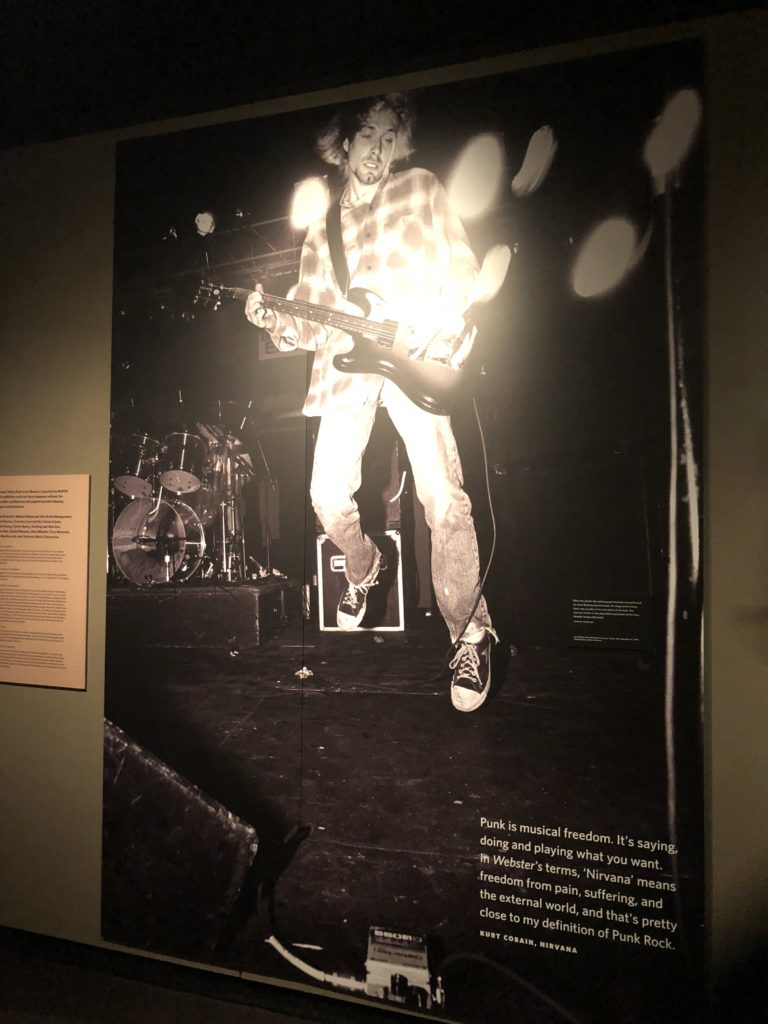
(Museum of Pop Culture in Seattle)
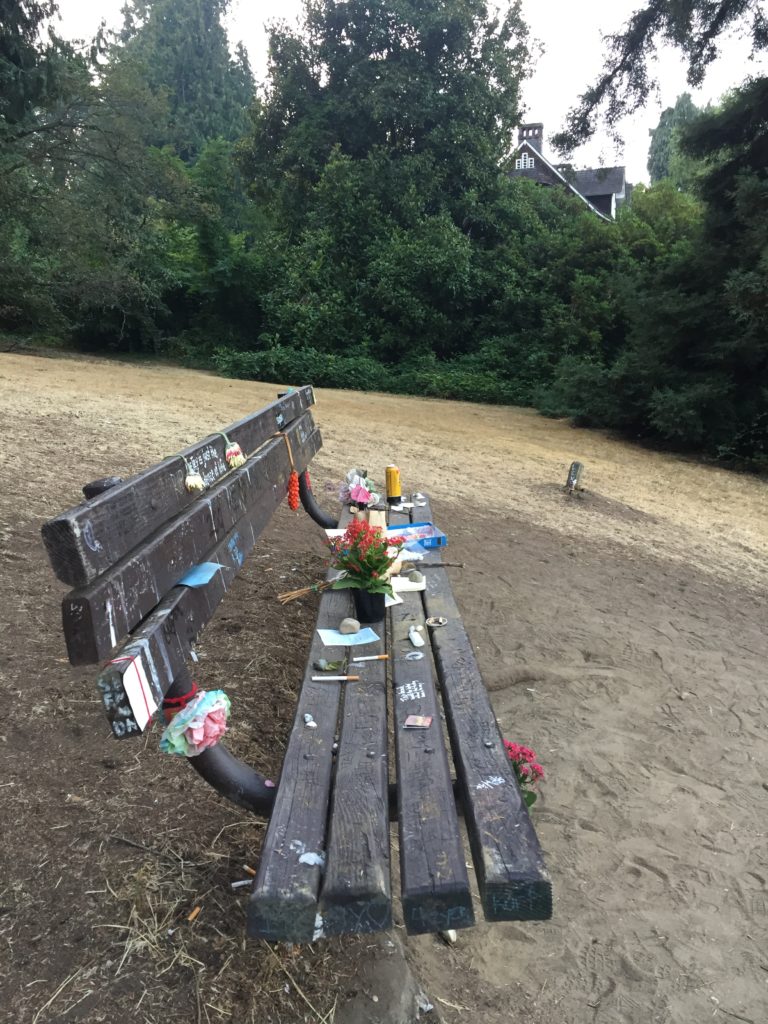
(A fan tribute in Seattle near his former home)
We carried on southwards, through the state of Washington and onto the Astoria-Megler Bridge, an impressive 6.5km bridge completed in 1966 that spans the broad Columbia River, connecting the Washington and Oregon. This bridge is part of the legendary US 101 highway, one that we’d drive a number of times on our journey down the country’s west coast.
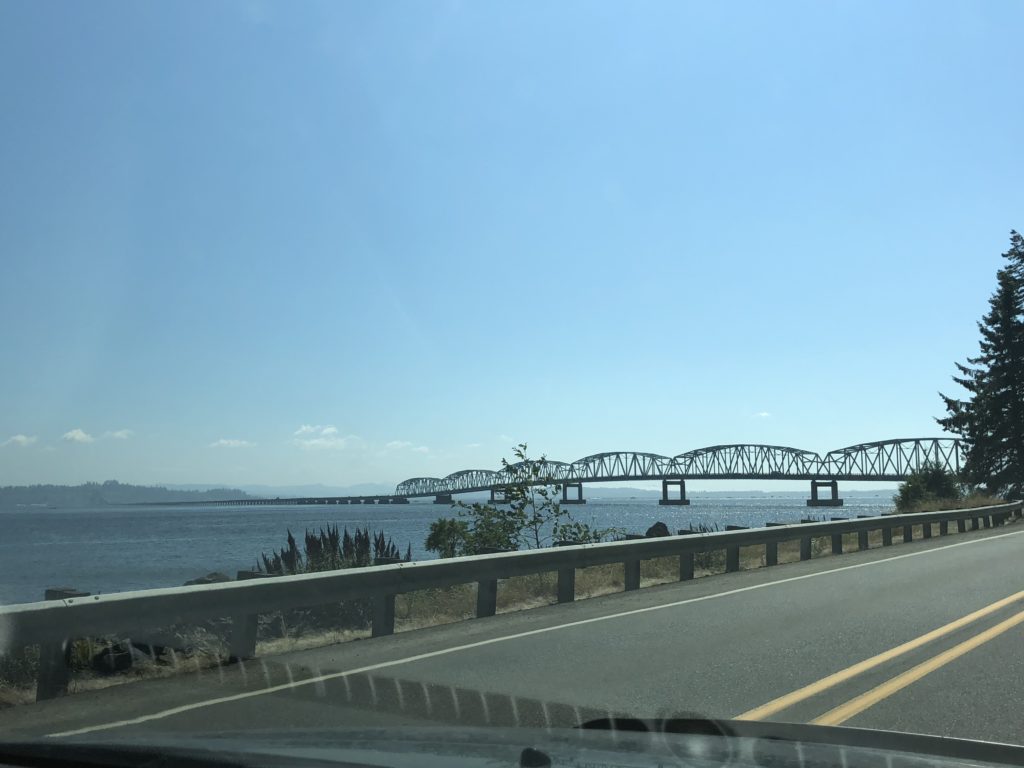
The Columbia River is big – 4th largest in the US by volume, and a drainage area the size of France. Here, at the mouth of the Columbia River, two explorers named Lewis and Clarke arrived in 1805. There is a back story. President Thomas Jefferson and Napoleon of France had just agreed on the terms of the Louisiana Purchase for $15 million, effectively doubling the United States’ territorial claim. Given that much of this land was ‘unexplored’, Jefferson sent off Meriwether Lewis and William Clarke to map the most direct route to the Pacific. The expedition began in May 1804 outside St. Louis. They arrived at the mouth of the Columbia River in November 1805, becoming the first US expedition to cross the western half of the continent. They camped on the south side of the river for the winter. The weather was rough – Clarke wrote: “I cannot say Pacific Ocean as I have not seen a pacific day since my arrival”. After this, they turned around and went all the way back again.
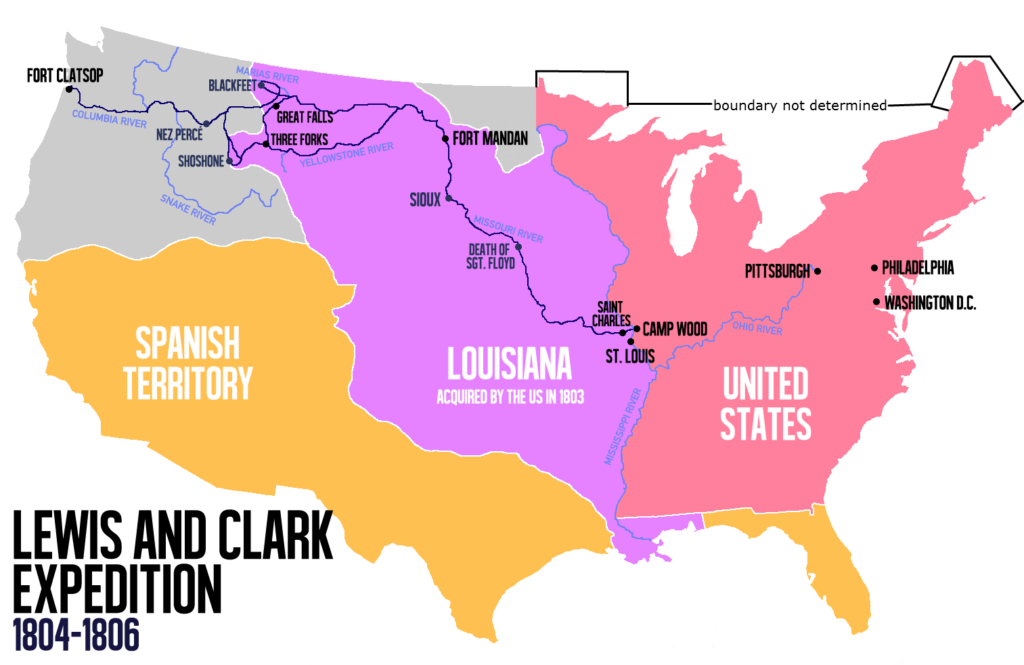
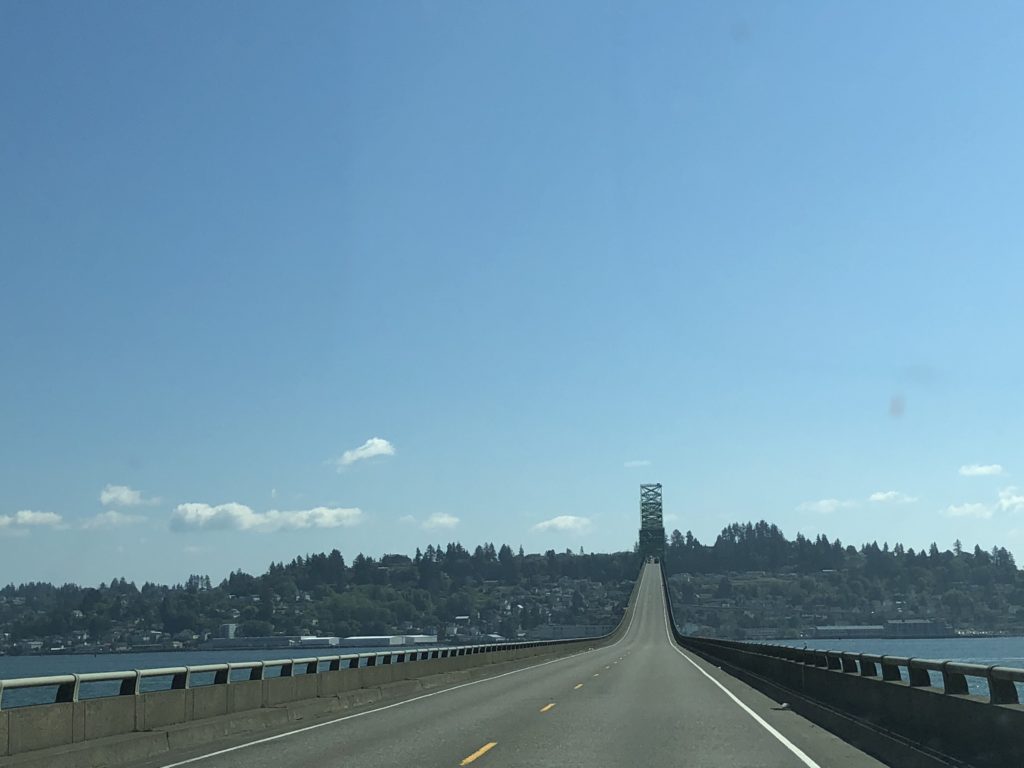

On the Oregon side of the bridge, we arrived in the beautiful small town of Astoria (pop: 10,000). The town was once a big deal in fishing, canning, lumber, and transportation. These days, with those industries much diminished, the city thrives on tourism and art. It’s a pretty place and easy to wander around.
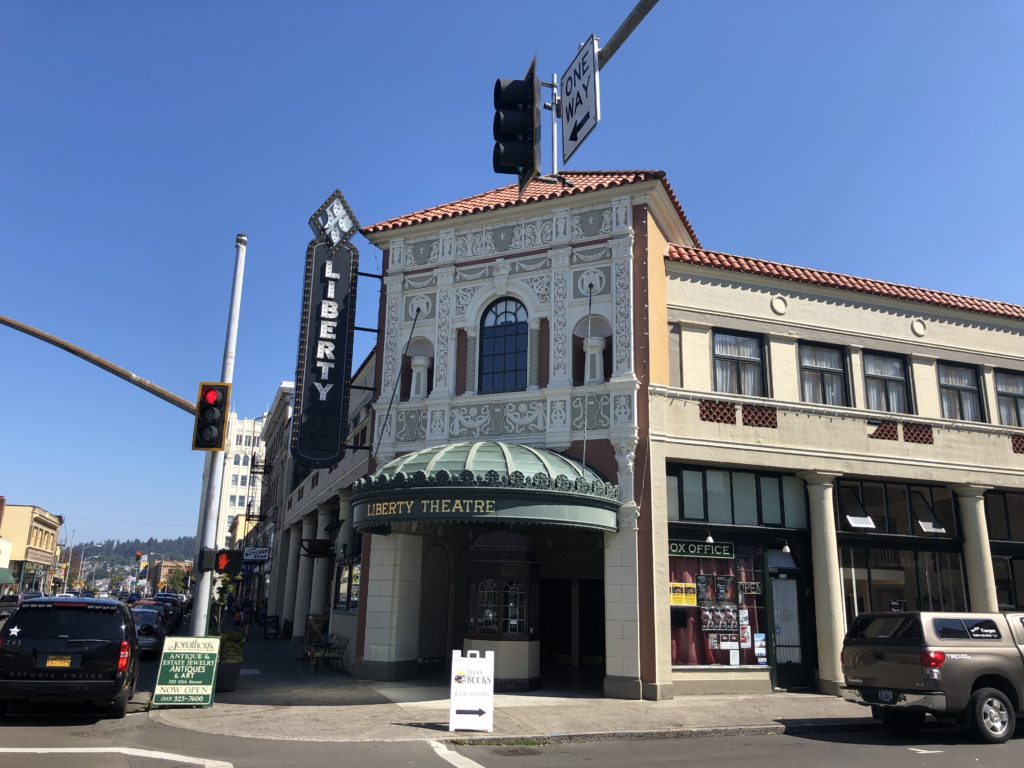

Astoria has been the location of a bunch of films over the years. The classic film “The Goonies” was set and filmed in Astoria, and the building below was used in the opening scene.
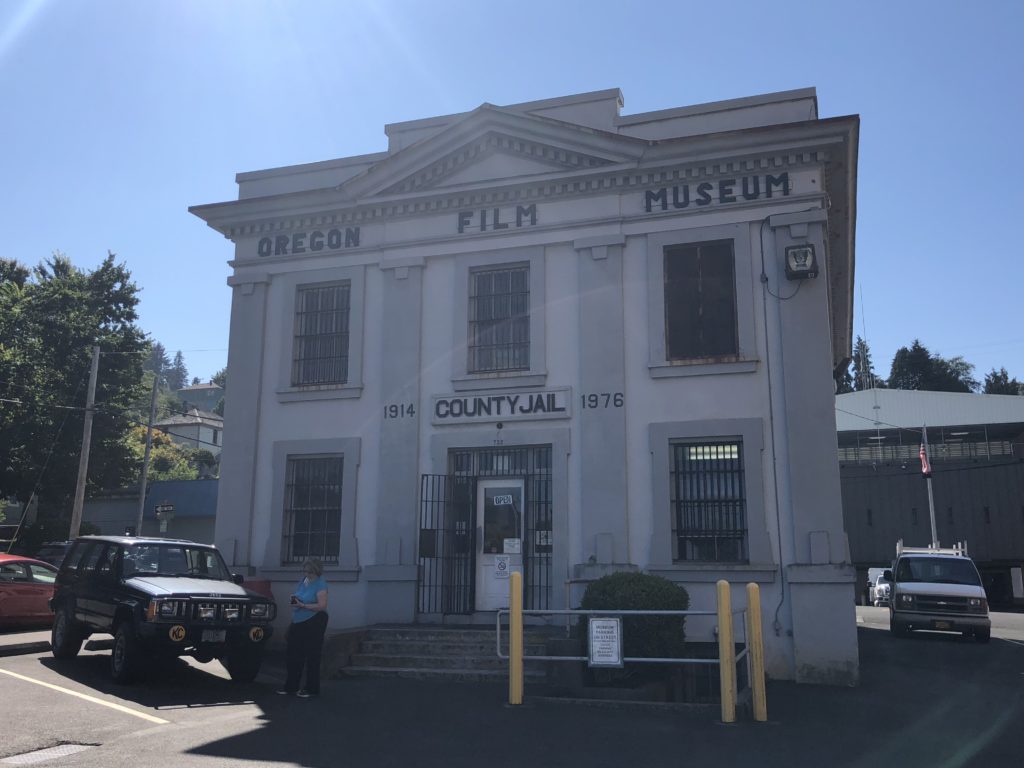
On one of the hills in town, the 38-metre tall Astoria Column was built in 1926. You can walk up an inner staircase and take in panoramic views of the area.
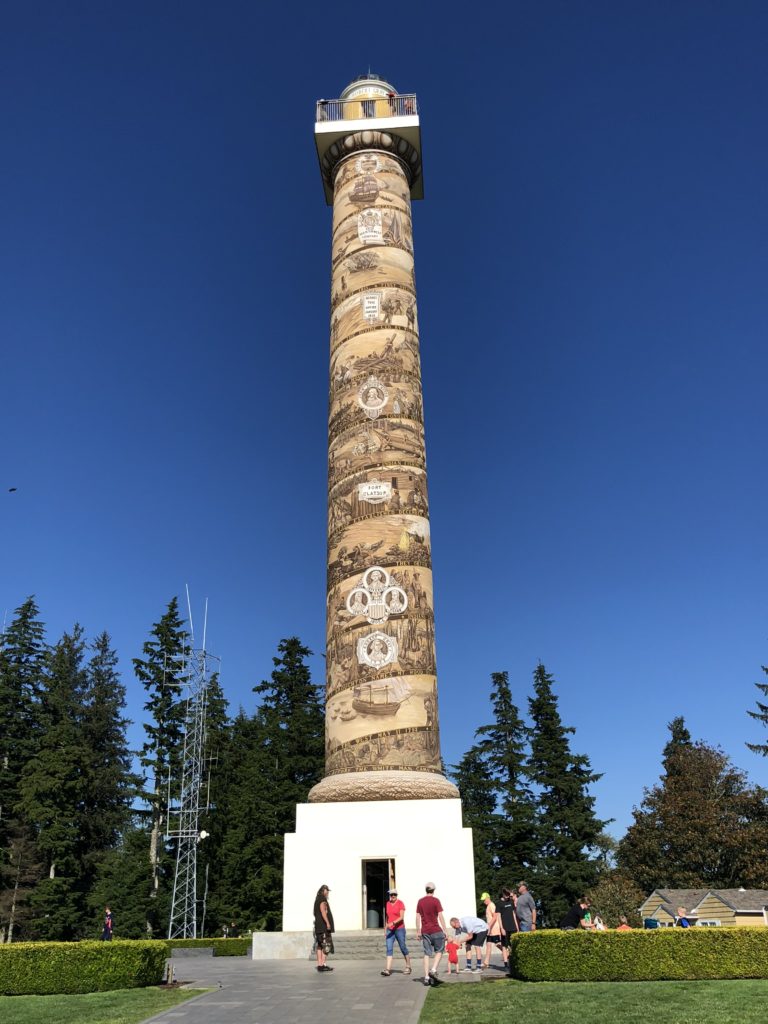
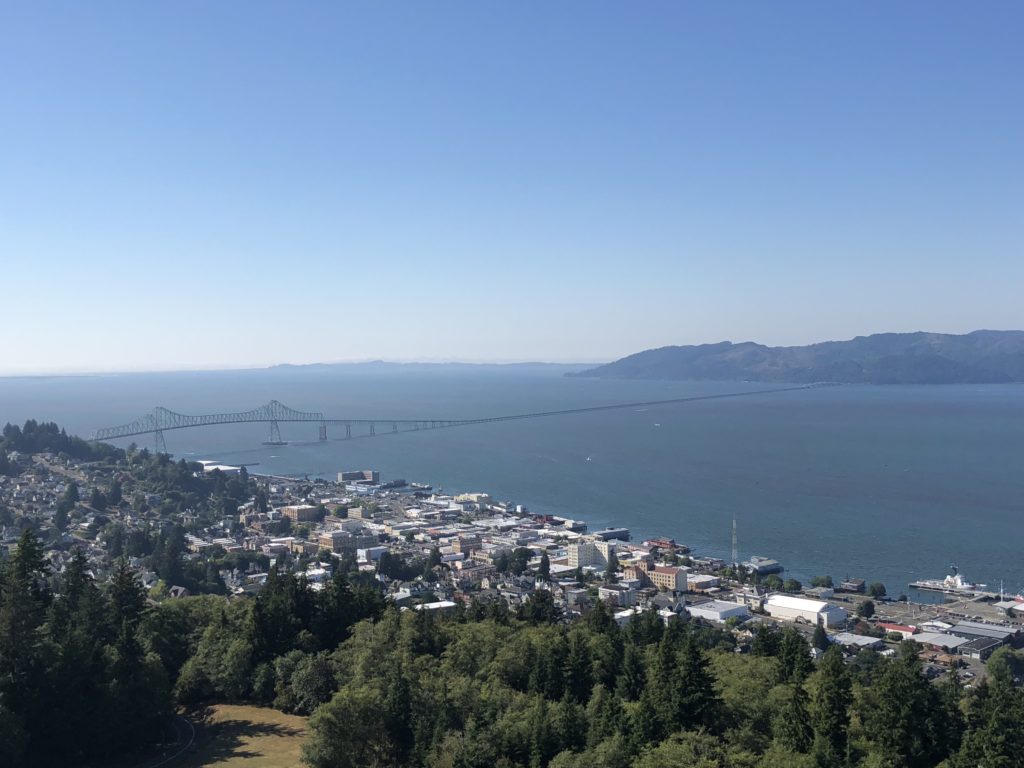
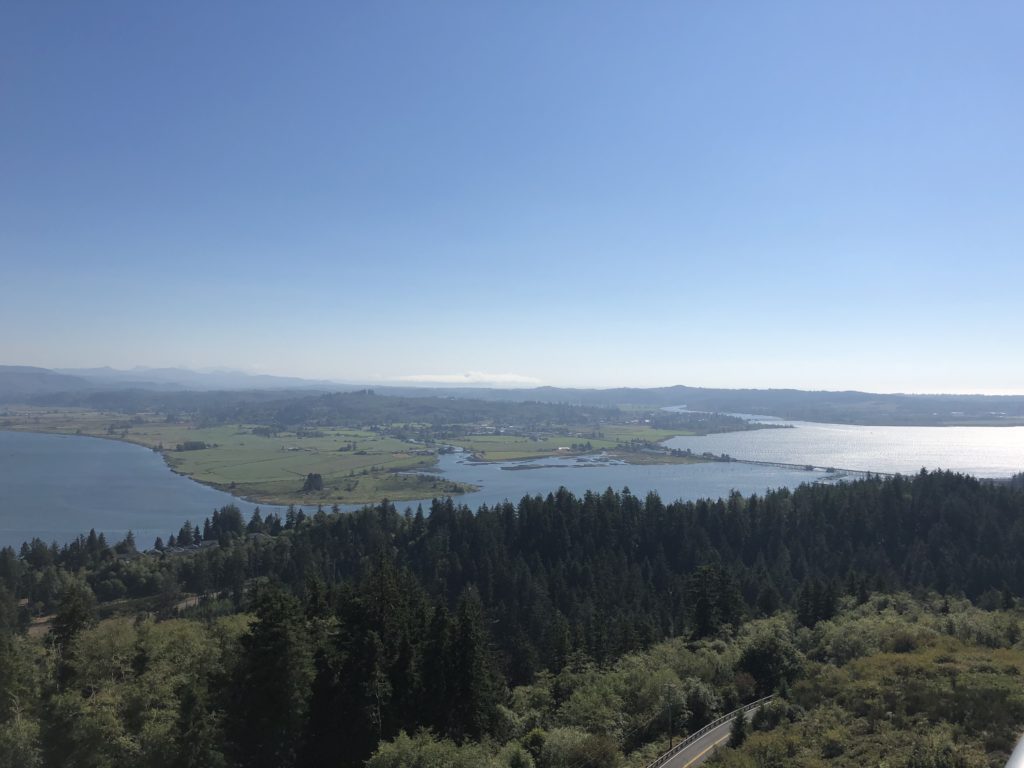
Continuing down into Oregon. On the way from Astoria to Portland, we decided to take a closer look at the Pacific Ocean by stopping off at Sunset Beach. It was not particularly pacific that day either – fog and strong chilly winds – but it was nice to be out. On to Portlandia…
